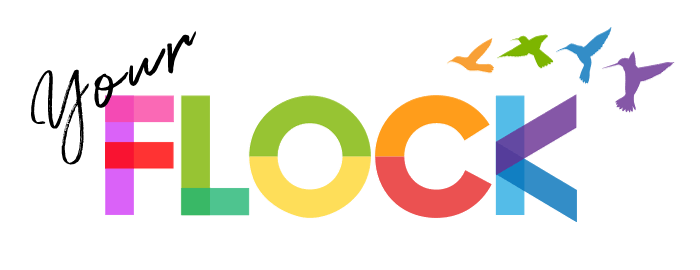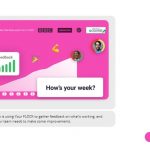The Great Resignation: why employees are quitting their jobs
After more than a year of pandemic-related worry and isolation, increased workloads, and little to no time off. Employee burnout continues to grow with as many as three out of four workers experiencing burnout on the job.

In 2016, Gallup research showed 48% of employees were disengaged in their work and a further 18% were actively disengaged. Creating dissention inside and outside of the business. The total of 66% should have rung warning bells. But it didn’t. In 2020 the total number of disengage rose to 87%, and the penny still hadn’t dropped. Even before COVID, 4 out of 5 employees left their employers and managers – not their jobs
90% of managers admit that they do not have enough time to engage with and lead their team members. And are not prioritising work effectively (DDI, 2019). This is simply because of the day-to-day workload imposed on team leaders.
The lack of time has a direct negative impact on employee experience, health, wellbeing and affects the operations of an organisation. Leading to employee turnover and a drop in productivity.
As a result, individuals are resigning seeking greater work-life balance. More flexibility and hybrid working. In what has been dubbed the ‘Great Resignation’. In fact, a recent survey suggests that in the UK 41% of employees are considering quitting their jobs in search of more satisfying work.
AI improving the Employee Experience
Technology is helping them flag employee burnout, distress, and lower job satisfaction. By using a platform like Your FLOCK. It gives you a chance to identify your disengaged team members before they reach a burnout. A feedback survey is done weekly by employees. Followed by an individual report on how the employee is performing. And where the employee needs more assistance. This helps team leaders and managers make data informed decisions. That can improve employee experience.
Here are a few ways employers can apply workforce management software to determine employee satisfaction and better the employee experience
1.Contribute to your employee’s strengths using Machine Learning (ML)
Due to an always-on culture and workplace expectations. Employees may be hesitant about raising concerns about their schedules, amount of work, personal and professional priorities. And overall experience they’re having at work—and opt for leaving their job entirely.
Your FLOCK – The world’s first employee engagement platform can help flag disengaged employees. Increase employee engagement, create higher job satisfaction, save time, and hire the right person in the first place. So, workplace dissatisfaction can be identified and dealt with early on.
Every person is unique and can be motivated and engaged with differently. Using psychometric tests or a platform such as Your FLOCK to find those individual strengths.
Knowing strengths is one thing but using it is more complex. Make sure that you engage in people’s strengths on a regular basis to make sure they are happy. You can use different engagement surveys. Many of the surveys are not tailored to strengths and generic. Your FLOCK however is tailored to people’s strengths as well as one’s core values.
Your FLOCK’S ML can provide employers with insights on the current state of an employee’s experience. And whether changes need to be made to better support and engage them.
 2.Time Efficiency
2.Time Efficiency
Team leaders are super busy. So, they don’t have time to go through a lot of analysis. Equip your leader with tools so they can spend five minutes a week on and make a small change in the team’s engagement. Memory ai can be used for better time management and planning. Where a platform like Your FLOCK empowers managers with 1-2-1 recommendations for people who need the most support so they can prioritise their time more effectively.
Similarly, AI such as Google Cloud (Vertex AI) will identify negative changes or trends in individual employee productivity. Either organisation-wide or individual employees. Software then automatically sends a survey to assess the reasons. Then shares the insights with the manager or human resources team so they can make changes accordingly.
Advancements in natural language processing could allow HR practitioners to use chatbots. And assistants to solve about their workload, feeling unvalued, or the effectiveness of leaders. Then surface insights if a change needs to be made at an organisational or operational level.
3.Using AI to change Day-to-Day Experiences
 Incorrect workforce management practices affect job satisfaction and contribute to an employee leaving an organisation. Those who don’t consider employees’ needs and invest in technology which enhances the employee experience risk losing more staff in the future.
Incorrect workforce management practices affect job satisfaction and contribute to an employee leaving an organisation. Those who don’t consider employees’ needs and invest in technology which enhances the employee experience risk losing more staff in the future.
Although AI was once feared for its capability to make certain jobs unwanted. If anything, it’s enabled employers to make more human decisions. According to HR Tech Influencer Tyrone Smith Jr. who says analytic tools designed to encourage active listening and predictive responses can highlight potential trouble and help organisations better support and engage with their employees.

As with any technological advancements. There are specific data and privacy laws. Rules and regulations, employment rights to consider when it comes to AI. When carried out properly, AI can free up the human workforce needed to perform manual, time-consuming tasks and leverage insights into employee’s day-to-day experiences that would be difficult to gather. Giving HR teams and managers more opportunities to connect with and support employees in meaningful ways.
AI can help HR professionals engage talent, improve job satisfaction, and highly develop their organisation against long term challenges. Worldwide, millions of people are considering career changes, so every employee (and the experience they gain at work) matters.
Book a personalised demo of Your FLOCK to find out how the platform can prevent your organisation facing ‘The Great Resignation’
References: AI to the Rescue: Preventing ‘The Great Resignation’ in your Workforce – HR News





